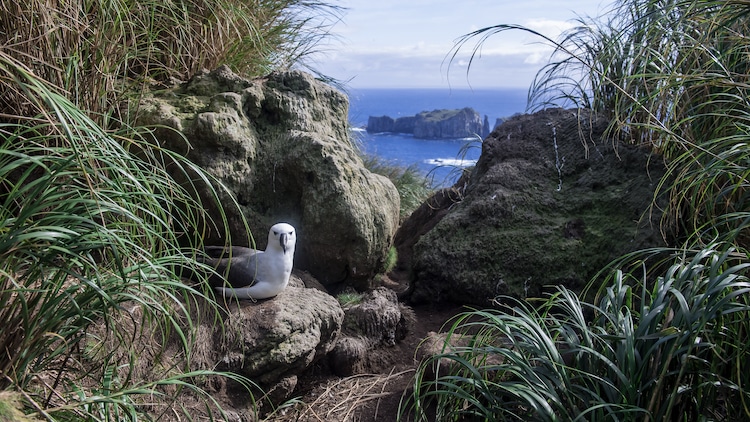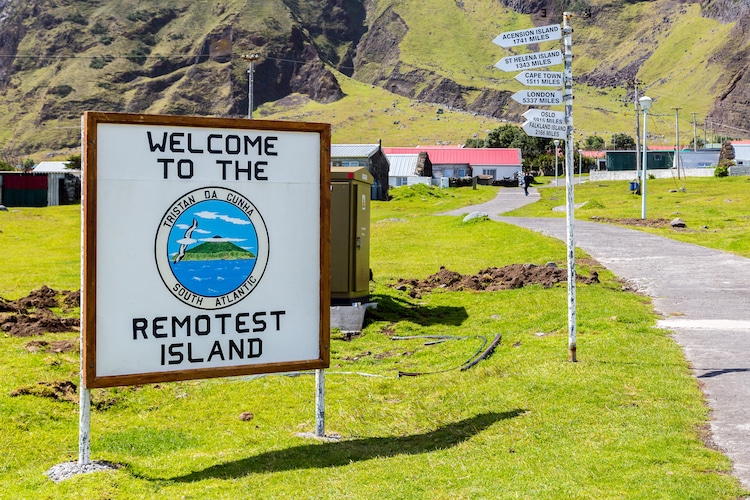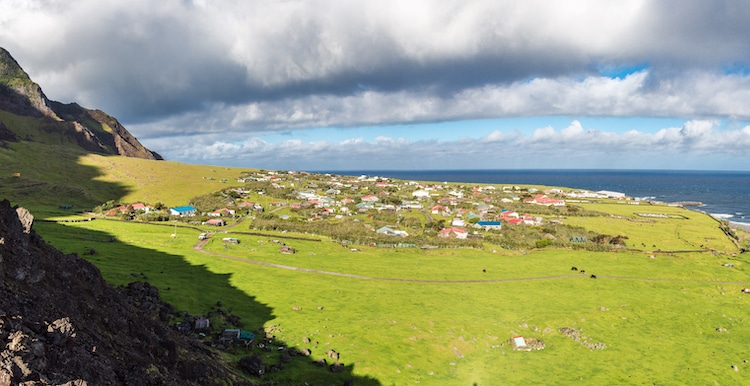
Photo: Stock Photos from Charles Bergman/Shutterstock
A series of remote islands in the South Atlantic Ocean will soon become one of the largest wildlife sanctuaries in the world. Home to only 244 people, Tristan da Cunha is a volcanic island that provides refuge to exotic and rare wildlife. It comprises a few landmasses, one of which is completely inaccessible. The total area of the islands is approximately 265,000 square miles, with very little room for humans.
A small village called Settlement of Edinburgh of the Seven Seas exists on the largest island. Visitors to the site are reminded of just how far from home they are via a simple sign that reads “Welcome to the Remotest Island.” The Settlement includes two churches, the world’s most isolated school, and a few other necessary resources like a supermarket and post office.
Though it makes for an interesting spot for any traveler, the human accommodations are not what make Tristan da Cunha so special. The creation of a Marine Protection Zone will result in a massive area that will be preserved as a “no-take-zone,” prohibiting 90% of all fishing and related activity. With the UK’s Blue Belt of marine protection, it will be the fourth-largest of its kind. The move is an important step to preserve the safety of natural life, including penguins, albatross, sharks, seals, and whales.

Photo: Stock Photos from maloff/Shutterstock
Only 3% of the world’s oceans are officially protected from dangerous human activity, but the UK hopes to increase this number to 30% by the year 2030. Initiatives like the Blue Belt Programme are critical to ensure the future viability of the planet. However, the ever-growing impact of climate change and increasing amount of pollution will continue to negatively affect the waters despite these important fishing bans.
Tristan da Cunha’s chief islander James Glass is part of the group that pushed for this accreditation and protection. He explains the importance of this step, saying, “Our life on Tristan da Cunha has always been based around our relationship with the sea, and that continues today. That’s why we’re fully protecting 90% of our waters, and we’re proud that we can play a key role in preserving the health of our oceans.”
Home to only 244 people, Tristan da Cunha is a volcanic island that provides refuge to exotic and rare wildlife.

Photo: Stock Photos from maloff/Shutterstock

Photo: Stock Photos from maloff/Shutterstock

Photo: Stock Photos from Vladimir Wrangel/Shutterstock
On these islands, there is the Marine Protection Zone, which creates a “no-take-zone” that prohibits 90% of all fishing and related activity.

Photo: Stock Photos from maloff/Shutterstock
h/t: [IFL Science]
Related Articles:
Floating Island Parks Will Soon Be Built in Copenhagen Harbor
You Can Sleep Under the Northern Lights in This Outdoor Bubble-Shaped Hotel
Scuba Diver Takes Breathtaking Photos of Underwater World
This Island off the Amalfi Coast in Italy Is Shaped Like a Dolphin
